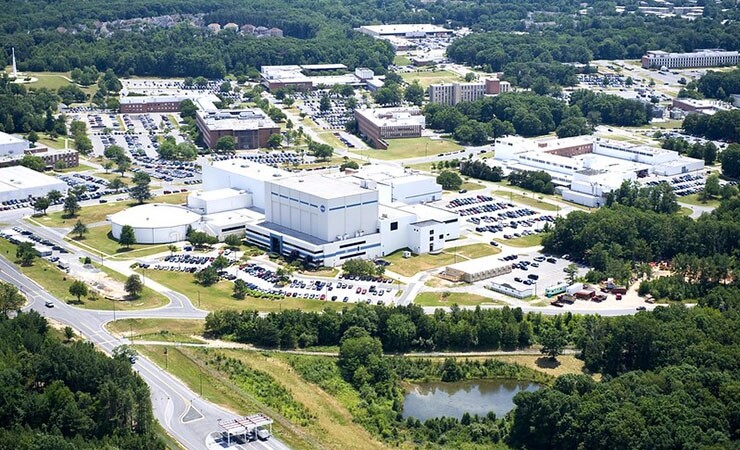
Science Committee Parcels Out $45 Billion for Democrats’ Spending Drive
Yesterday, the House Science Committee advanced
Republicans unanimously oppose the overall package and so Democrats are aiming to pass it using Congress’ budget reconciliation process, which circumvents the Senate’s 60-vote filibuster threshold. However, there are also strong disagreements among Democrats over the scale and content of the package, and efforts to resolve such disputes could eventually result in R&D-related spending proposals being dropped or significantly altered.

Committee aims to fund bipartisan priorities
Introducing the Science Committee’s proposal, Committee Chair Eddie Bernice Johnson (D-TX) stated
About $10 billion of the committee’s total allocation is focused on the renovation and recapitalization of science facilities. In addition, more than $8 billion would pay for experiments and upgraded research tools supported by the Department of Energy, while about $2 billion would go toward high-performance computing and data processing across agencies.
Roughly $5 billion is directed toward climate research and clean-energy efforts, of which more than half would go to fusion energy, an area that the committee has sought to drive forward. The legislation would also provide billions of dollars to expand research programs at the National Science Foundation and Department of Commerce.
Committee Ranking Member Frank Lucas (R-OK) reiterated his party’s opposition to the contemplated scale of spending in the overall package and also raised several objections
“These aren’t thoughtful investments designed to significantly improve American research and development. We’re throwing money at agencies with almost no direction on how it is to be spent,” he said.
Department of Energy
The committee’s legislation allocates about $15.6 billion to DOE, of which about $12.8 billion is for the Office of Science. The office was the focal point for a major bipartisan policy bill
The reconciliation package proposal would provide advance funding for various construction projects that are underway or in planning stages, encompassing small projects as well as flagship efforts such as the Electron-Ion Collider and the Long-Baseline Neutrino Facility and Deep Underground Neutrino Experiment
Of the roughly $2.6 billion included for fusion energy activities, about half is for U.S. contributions to the international ITER facility under construction in France. The rest would mostly fund initiatives that were authorized in the Energy Act of 2020
Funding for other research programs is limited to $340 million for facilitating researchers’ access to U.S.-based quantum computers, $180 million for low-dose radiation research

DOE’s applied energy programs would receive more than $25 billion for technology development and demonstration projects under the bipartisan infrastructure spending package
Accordingly, the Science Committee allocates less than $2.5 billion for applied energy R&D, of which about $1 billion is for renewable energy demonstration projects. Most of the rest is for projects at Idaho National Lab and the National Renewable Energy Lab and $95 million is for early work on the proposed Versatile Test Reactor, which appropriators have zeroed out in their fiscal year 2022 spending proposals
National Science Foundation
The legislation would provide NSF with $11 billion over ten years, of which $7.6 billion is for research and education programs and $3.4 billion is for research infrastructure.
Eligible uses of the research money include extending grant awards to address pandemic-related disruptions to research projects as well as funding new projects across all disciplines. Of the research funds, $700 million is set aside for work at Minority Serving Institutions and $400 million is for climate change research, “including research related to wildfires.”
The proposal also states the funds can support “use-inspired and translational research and development awards, entrepreneurial education, and technology transfer activities,” an allusion to the types of activities the committee envisions funding through the new directorate proposed in its bipartisan NSF for the Future Act
Democrats rejected an amendment
Eligible uses of the infrastructure funds include equipment, mid-scale infrastructure, Antarctic infrastructure modernization, and major construction projects. The bill sets aside $1 billion for projects at academic institutions, of which $300 million is specifically for Minority Serving Institutions.
The committee adopted an amendment
Rep. Michael Waltz (R-FL) offered a symbolic amendment
NASA

An aerial view of NASA’s Goddard Space Flight Center in Maryland. A recent NASA report states that 68% of the facilities at Goddard are more than 50 years old. (Image credit – Bill Hrybyk / NASA)
NASA would receive $4.4 billion over five years, of which $4 billion is for “repair, recapitalization, and modernization of physical infrastructure and facilities.” NASA informed
The total amount is well short of the $11.5 billion that NASA Administrator Bill Nelson is seeking
The remainder of the NASA funding in the committee’s legislation is mainly for climate-related activities, with $225 million for R&D on “sustainable aviation”
Democrats rejected an amendment
Department of Commerce
The legislation includes $13.5 billion for the Department of Commerce, of which $5 billion is for regional innovation initiatives and the remainder is split between the National Institute of Standards and Technology and the National Oceanic and Atmospheric Administration.
This summer, the committee advanced
NIST would receive $4.2 billion over 10 years, of which $1 billion is for facility upgrades and $1.2 billion is for research on “artificial intelligence, cybersecurity, quantum information science and technology, biotechnology, communications technologies, advanced manufacturing, resilience to natural hazards including wildfires, greenhouse gas and other climate-related measurement.” The remaining $2 billion would be split between the Manufacturing Extension Partnership program and support for “advanced manufacturing research, development, and testbeds.”
The committee adopted an amendment
NOAA would receive $4.3 billion over five years through the reconciliation legislation to support activities in weather and climate research, forecasting, and decision support, as well as associated observation and computing infrastructure. The bill would provide $1.2 billion for Hurricane Hunter aircraft and phased array radar as well as $743 million for updating research facilities and equipment.
Of the remainder, $765 million would go to developing a “climate-ready workforce” and to distributing “actionable climate information” to communities across the U.S., reflecting committee Democrats’ interest in bolstering NOAA’s suite of climate services
Environmental Protection Agency
EPA would receive $264 million over five years for a variety of climate change R&D and mitigation activities. These include better characterizing cumulative pollution impacts, developing a “grants-based regional climate science network,” and “increasing engagement capacity with frontline communities with environmental justice concerns in translating, utilizing, and evaluating scientific research results.”
Hurdles complicate path to finish line
Aside from the Science Committee, some other House committees have also proposed providing portions of their reconciliation package allocations to R&D-related efforts.
For instance, the Energy and Commerce Committee’s draft legislation
The Natural Resources Committee has proposed
The Education and Labor Committee’s proposal
As the pieces of the reconciliation package are assembled, congressional leaders will also have to negotiate a path forward for the legislation.
Some House Democrats have insisted that, unless the package moves ahead, they will not support the bipartisan infrastructure spending bill that they have resolved to vote on by Sept. 27. At the same time, House Speaker Nancy Pelosi (D-CA) has said the House will develop its proposals in tandem with the Senate, which has not yet released counterpart legislation. However, Majority Leader Chuck Schumer (D-NY) insists
Manchin has reportedly also said
If a compromise reduces the scale of the reconciliation package, influential players could insist on preserving at least some of its R&D-related provisions, even though its primary purpose is to fund social programs and climate change mitigation.
Notably, Manchin championed




